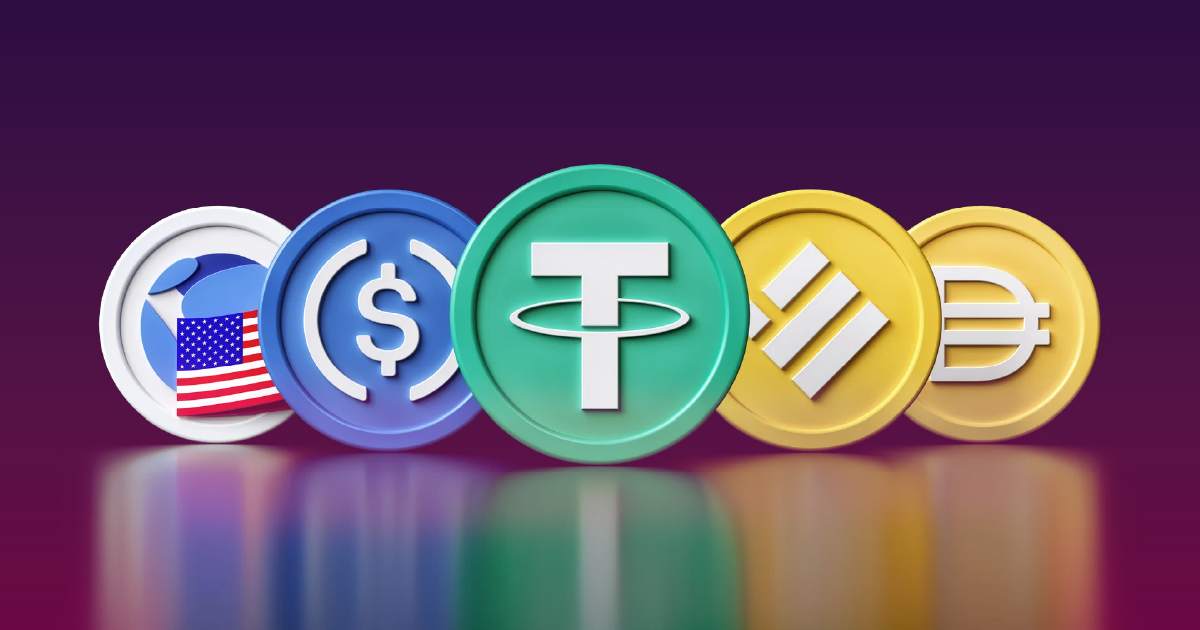What are Stablecoins and Why Should You Care?
April 4, 2025
A stablecoin is a type of cryptocurrency designed to minimise price volatility by maintaining a stable peg to a reference asset, typically the US dollar.
Unlike other cryptocurrencies known for their price fluctuations, stablecoins aim for greater price stability, making them more suitable for everyday transactions and use as a medium of exchange within the cryptocurrency ecosystem.
Why are Stablecoins important?
Bitcoin maintains its position as the most prominent cryptocurrency, however its characteristic price volatility, while presenting opportunities for traders and fostering long-term investment potential, renders it unsuitable for the stability required in everyday transactional scenarios.
On May 22, 2010, Laszlo Hanyecz famously traded 10,000 Bitcoin for two pizzas, marking the first recorded Bitcoin transaction for goods. While these pizzas initially cost a mere $41, the subsequent surge in Bitcoin’s value has transformed this seemingly mundane purchase into a historical anecdote, highlighting the immense growth potential of cryptocurrencies.
However, this event also underscores a key challenge for merchants: the inherent volatility of cryptocurrencies exposes them to significant price fluctuations and potential losses and hinders their potential for everyday transactions.
Consequently, to ensure a currency’s capacity to retain its purchasing power within short-term horizons and effectively fulfill its role as a medium of exchange, a degree of price stability is essential. Stablecoins have been developed with the explicit objective of addressing this challenge.
Types of Stablecoins
Many people argue that stablecoins are useless as the underlying value, e.g. the US Dollar, is widely accepted. However, the counter argument is that stablecoins offer greater interoperability in the digital age and in a landscape not controlled by central banks.
There are 4 different types of Stablecoins widely accepted today:
- Fiat-Collaterised Stablecoins
These stablecoins maintain a reserve of fiat currency, such as the US Dollar, as collateral, assuring the stablecoin’s value. Tether (USDT) and TrueUSD (TUSD) are popular stablecoins backed by US Dollar reserves and denominated at parity to the US Dollar.
- Commodity-Backed Stablecoins
These stablecoins are pegged to the market value of commodities such as gold, silver, or oil. These stablecoins hold the commodity through third-party custodians or by investing in instruments that hold them. One example is Tether Gold (XAUt), which is backed by gold reserves.
- Crypto-Collaterised Stablecoins
These stablecoins are backed by other cryptocurrencies. Due to the fact that the reserve cryptocurrency may also be prone to high volatility, such stablecoins are over-collaterised which means the value of the cryptocurrency held in reserves exceeds the value of the stablecoins issued. For example, MakerDAO’s Dai (DAI) stablecoin is pegged to the US Dollar but is backed by Ethereum (ETH).
- Algorithmic Stablecoins
These stablecoins may or may not be backed by reserve assets, depending on the issuer. Their core strategy involves maintaining price stability by algorithmically adjusting the coin’s supply based on a predefined formula.
This approach, while reminiscent of central banks that also manage currency value without relying on reserves, lacks the public oversight and legal backing of central bank policies.
However, this lack of oversight can lead to crises, as exemplified by the dramatic collapse of TerraUSD (UST) in May 2022. The UST token lost its peg to the US Dollar, plummeting over 60%, as the price of its sister token, Luna, crashed by over 80% within a single day.”
Stablecoin Regulations
Given the rapid growth of the $160+ billion stablecoin market and its potential systemic impact, regulators continue to intensify scrutiny on the stablecoin market. The Markets in Crypto Assets Regulation (MiCA) in Europe, effective in 2023, exemplifies this trend.
MiCA effectively bans all algorithmic stablecoins and mandates that other stablecoins maintain comprehensive reserves held by third-party custodians. These reserves must be liquid and adhere to a 1:1 ratio with all issued coins.
Conclusion
In conclusion, stablecoins have emerged as a crucial innovation within the cryptocurrency landscape, addressing the volatility inherent in cryptocurrencies like Bitcoin. While various types of stablecoins exist, ranging from fiat-collateralised to algorithmic, ensuring their stability and mitigating potential risks remain paramount.
The regulatory landscape is evolving rapidly, with initiatives like MiCA aiming to enhance transparency, protect investors, and foster responsible innovation within the stablecoin market.
As the cryptocurrency ecosystem continues to mature, the role of stablecoins will likely evolve alongside it, playing a significant role in facilitating seamless and secure transactions within the digital economy.
The comments, opinions, and analyses expressed in this article are for informational purposes only, and it should not be referenced as Financial Advice.

